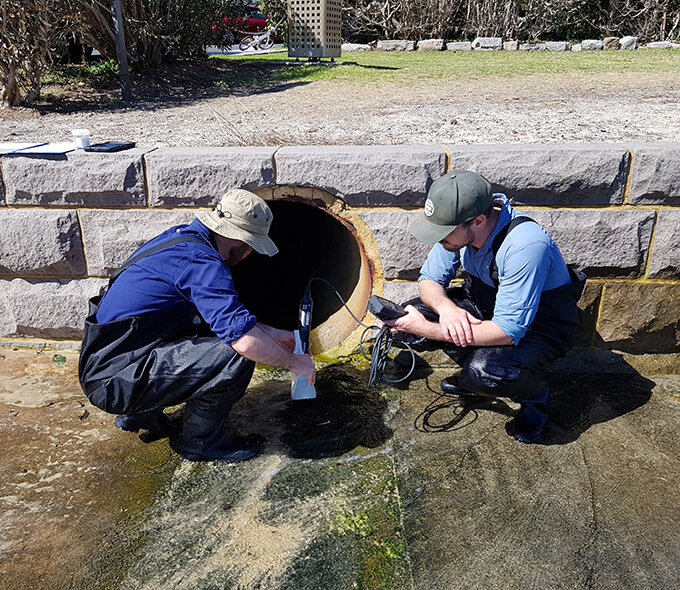Poor quality swimming water at our beaches can cause illness such as gastroenteritis. Knowledge of pollution levels means people can make informed choices about where and when to swim, and avoid swim sites with poor water quality.
The challenge
Poor water quality grades given to Rose Bay Beach in the annual NSW State of the Beaches report have raised concerns across the community.
The detection of pathogens, such as enterococci bacteria, implied the water was contaminated by fecal waste. This suggested it wasn’t safe for people to swim or participate in outdoor water activities in the bay.
Local and state government agencies, beach goers, recreational swimmers, and the broader community have worked hard to improve water quality.
Beach and water managers undertook regular water quality monitoring but weren’t able to pinpoint the source or sources of the pollution. This made it difficult for the local council to respond to the water quality issue and ensure management dollars were being spent efficiently.

We began investigating the water quality at Rose Bay in 2019. Our goal was to accurately measure the level of microbial pollution and identify the biological source/s of the problem.
We worked with the Ocean Microbiology Group from the University of Technology Sydney who had developed genetic marker detection methods for enterococci.
We developed a water quality sampling program where we:
- collected water samples
- measured enterococci levels and assessed the level of contamination from faeces
- extracted DNA to determine whether the bacteria were from humans, dogs or birds.
We worked with the support of the Rose Bay Working Party which included: Sydney Water, Transport NSW, Woollahra Council, the Member for Vaucluse and the local community.
We confirmed the microbial or faecal pollution was mainly from human sewerage.
A small contribution was from dog faeces, likely to have washed into the bay during wet weather. Bird faeces were also detected but were the same as background levels found elsewhere on the coast.
We then identified the main sources of contamination, which included the sewerage network and stormwater.
This enabled Woollahra Council and Sydney Water to detect and fix problems in the sewerage network, including broken pipes and illegal sewer connections, and implement better stormwater management.
From this work we:
- improved beach grades from ‘poor’ in 2019–20 to ‘good’ in 2020–21
- reduced microbial pollution – fewer microbial readings were detected outside the normal range
- increased community confidence about when it is safe to swim
- gave water managers access to the latest technology to determine the sources of pollution.
Water quality in Rose Bay is usually fine for swimming in dry weather. After rain the water quality can become poor, but this is usually near stormwater drains.
'Rose Bay Beach is one of Woollahra Council’s most highly valued and heavily used public spaces,' said Micaela Hopkins from the Woollahra Municipal Council.
'DPE’s Beachwatch Program identified that water quality at Rose Bay Beach was consistently poor, particularly after wet weather events.
'DPE helped to address this by working with UTS, Council and Sydney Water to develop and undertake a detailed water quality audit. This identified that bacterial pollution was primarily of human origin, and identified the hotspot pollution sources in the catchment. This enabled targeted investigations to resolve sewer leaks. DPE’s team of experienced scientists provided expertise that Council does not have in-house to help us address a long-term issue.'
We would like to apply this science elsewhere. The new approach we used for Rose Bay Beach could potentially be used in other locations around New South Wales.